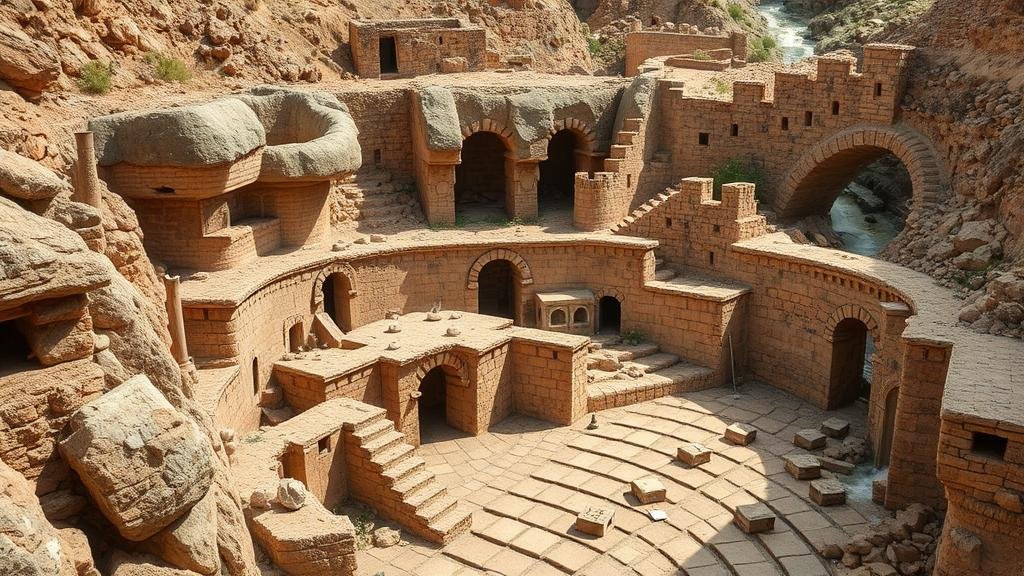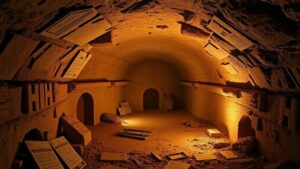Investigating the lost mining cities of the Roman Empire in the Iberian Peninsula.
Investigating the Lost Mining Cities of the Roman Empire in the Iberian Peninsula
The Iberian Peninsula, comprising modern-day Spain and Portugal, was a crucial territory for the Roman Empire due to its rich mineral resources and strategic location. Archaeological discoveries have unveiled evidence of a thriving mining industry that significantly contributed to the Empires wealth. This article explores some of the lost mining cities of the Roman Empire in this region, detailing their historical significance and current research efforts to uncover their mysteries.
The Roman Mining Industry in the Iberian Peninsula
The mining industry in the Iberian Peninsula dates back to the ancient Phoenician and Celtic civilizations, but it flourished under Roman rule. Key minerals mined included silver, gold, copper, and lead, with the most notable region being the province of Hispania Baetica, particularly around modern-day Andalusia. The technological innovations brought by the Romans, such as hydraulic mining techniques, revolutionized mineral extraction.
Notable Mining Cities and Sites
- Rio Tinto: Located in the province of Huelva, RÃo Tinto was a principal source of copper and silver. The area features the remnants of ancient mines and smelting facilities. In fact, the mining activities here are so extensive that they are still visible from space.
- Las Medulas: This site in the province of León is renowned for its unique landscape, shaped by Roman open-pit mining techniques in the 1st century AD for gold. Las Medulas was declared a UNESCO World Heritage site in 1997, highlighting its engineering significance.
- Castulo: Situated near Linares in Jaén, Castulo was an integral Roman settlement associated with silver mining. Current archaeological efforts are ongoing, revealing important artefacts that depict the citys role in the Roman economy.
Technological Innovations and Mining Methods
The Romans introduced advanced mining techniques that were remarkable for their time. e included:
- Hydraulic Mining: Romans utilized water pressure to dislodge rock and ore, improving extraction efficiency. This method was especially prevalent in Las Medulas.
- Stamp Mills: Used to crush ore, stamp mills increased the ability to refine metals, making the extraction process more profitable.
- Underground Ventilation: Innovations in ventilation allowed for safer mining operations, which were crucial for deep mines.
These methods not only enhanced production but also demonstrated the technological prowess of Roman engineering.
The Legacy of Roman Mining Cities
The economic impact of these mining cities extended beyond their immediate surroundings. They contributed significantly to Roman trade and wealth accumulation, with silver from Hispania circulating throughout the Empire. This influx of resources allowed for extensive military campaigns and infrastructure projects across Europe.
But, as the empire declined in the 5th century, many mining cities fell into disrepair and were forgotten. Today, the decline in mining activities exacerbated by economic shifts means many of these historical sites are under threat from natural erosion and urban development.
Modern Research and Archaeological Efforts
Today, archaeologists and historians are working diligently to uncover the lost mining cities and understand their role in the Roman economy. Key initiatives include:
- Excavation Projects: Ongoing digs at sites like Castulo and RÃo Tinto aim to retrieve artefacts and better understand mining practices.
- Technological Applications: Remote sensing and GIS technology used to map these ancient cities comprehensively.
- Public Engagement: Museums and educational programs developed to raise awareness of the historical importance of mining in the region.
Conclusion and Actionable Takeaways
The lost mining cities of the Roman Empire in the Iberian Peninsula are not just relics of the past; they are vital to understanding ancient economic practices, technological advancements, and cultural exchanges. Continued research and conservation efforts will ensure that the legacy of these cities is preserved for future generations.
For those interested in exploring this subject further, consider:
- Visiting archaeological sites in Spain, such as Las Medulas, to witness the remnants of Roman engineering.
- Supporting local archaeological initiatives focused on the preservation of these historical resources.
- Engaging with historical societies and museums to broaden your understanding of Roman technology and economy.
In the age of rapid urbanization and environmental change, the story of these lost mining cities serves as a reminder of the intricate relationship between civilization and its natural resources.



